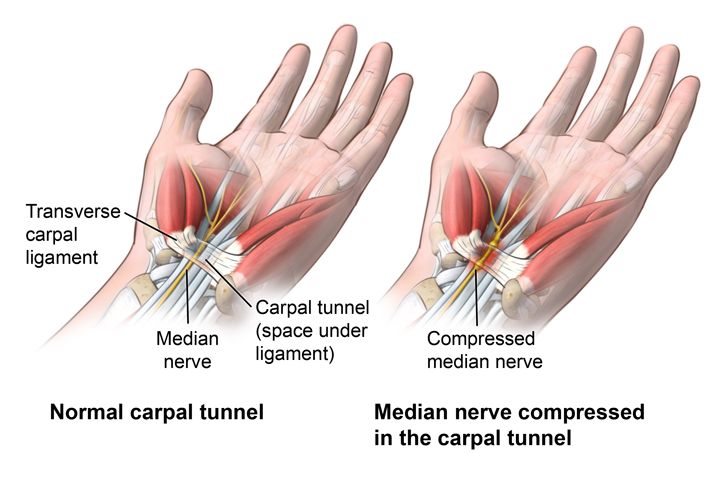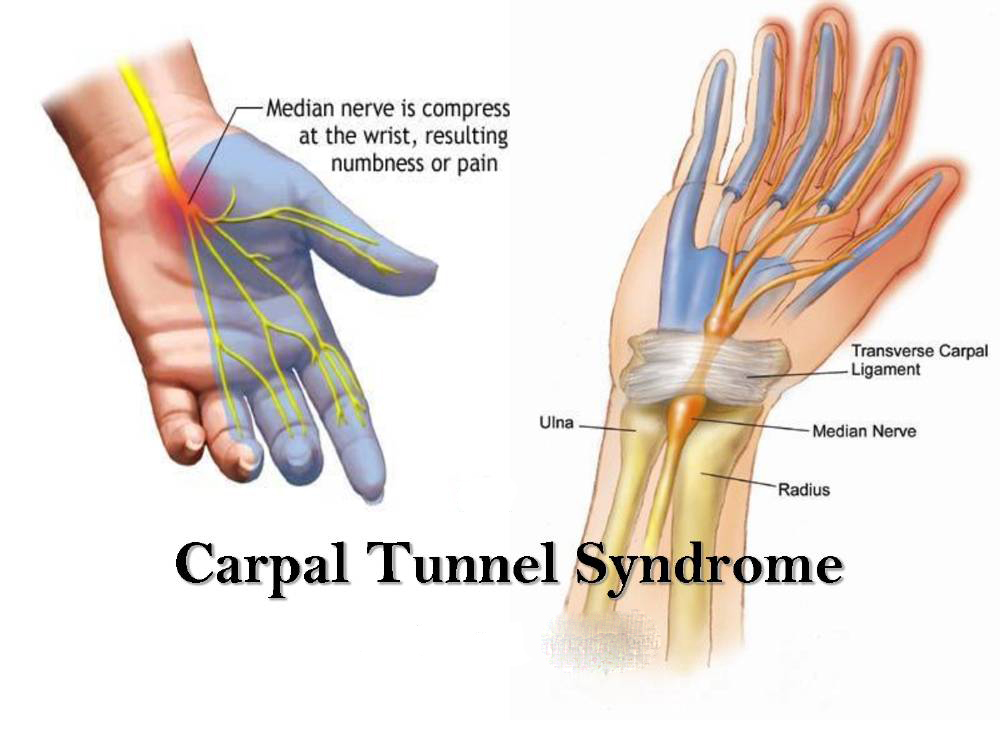Treatment Options for Carpal Tunnel Syndrome
Carpal tunnel syndrome occurs when the median nerve is compressed as it passes into the hand.
The median nerve is situated on the palm side of the hand (also known as the carpal tunnel).
Sensation to the index finger, long finger, thumb, and a part of the ring finger is provided by the median nerve. Impulse to the muscles going to the thumb is also supplied by the median nerve.
Depending on the condition’s severity, treatment approach can range from noninvasive alternatives to carpal tunnel syndrome surgery.

Common Causes of Carpal Tunnel Syndrome
Development of carpal tunnel syndrome can be attributed to a lot of causes. Some of the causes include:
- Repeated wrist motions
- Poor wrist positioning
- Prolonged exposure to vibrations (while using hand or power tools)
- Repeated movements that cause overextension of the wrist (typing or playing the piano)
Carpal tunnel syndrome may also occur when there is inflammation of the median nerve. In most cases, the inflammation can be secondary to underlying medical conditions that obstruct blood flow and cause swelling.
Some of the medical conditions often associated with carpal tunnel syndrome include:
- Thyroid dysfunction
- High blood pressure
- Diabetes
- Fractures or wrist traumas
- Autoimmune disorders (i.e. rheumatoid arthritis)
- Fluid retention (can be secondary to menopause or pregnancy)
Carpal Tunnel Syndrome Risk Factors
Compared to men, women are three times more prone to developing carpal tunnel syndrome. The condition is also common among individuals between 30 and 60 years of age.
Lifestyle factors like sedentary lifestyle, high salt intake, smoking, and a high BMI (body mass index) can increase one’s risk of developing the condition.
Individuals with occupations that entail repetitive wrist movements (typing, manufacturing, assembly lines, and construction work) are also more susceptible to developing the condition.
Prevalent Carpal Tunnel Syndrome Symptoms
Carpal tunnel syndrome symptoms often manifest along the nerve path. Telltale indicators of the condition can include:
- Tingling, pain, and numbness in the first three fingers of the hand and the thumb
- Burning sensation and pain that travels up to the arm
- Painful wrist pain that interferes with sleep
- Noticeable weakness in the hand’s muscles
Carpal Tunnel Syndrome Diagnosis
Diagnosis of the condition can be done through a combination of medical history check, physical examination, and nerve conduction studies.
Physical examination will involve a detailed assessment of the shoulder, hand, wrist, and the neck. The procedure is also done to check for other likely causes of nerve pressure.
Other symptoms like swelling, deformities, and tenderness will also be looked into. Muscle strength (in the hand) and finger sensations will also be checked.
Nerve conduction studies might also be recommended to measure the conduction speed of the nerve impulses. A nerve impulse that is slower than usual may indicate carpal tunnel syndrome.
Treatment Options for Carpal Tunnel Syndrome
Early detection and treatment can often result to dramatic long-term improvement.
However, left untreated, carpal tunnel syndrome may lead to disability, loss of hand function, and nerve damage.
Treatment approach will often depend on the symptoms and the severity of the condition.
For mild cases, conservative treatment options for carpal tunnel syndrome include:
- Wrist splints (helps hold the hand in neutral position)
- Painkillers and medications that help reduce the inflammation
- Treatment of any underlying medical conditions (i.e. diabetes, arthritis)
- Steroid injection to help minimize the inflammation

Carpal tunnel syndrome surgery is the recommended option when there is severe median nerve damage. Surgery entails cutting the band of tissues situation in the wrist to reduce the pressure on the nerve.
While the outcome of carpal tunnel syndrome surgery is generally good, factors like weakness, diabetes mellitus, duration of the symptoms, and age of the patient can sometimes affect the outcome of the procedure.



